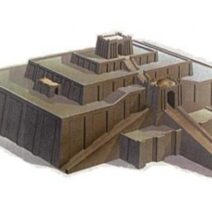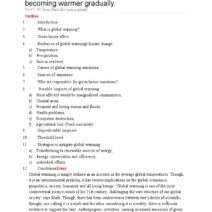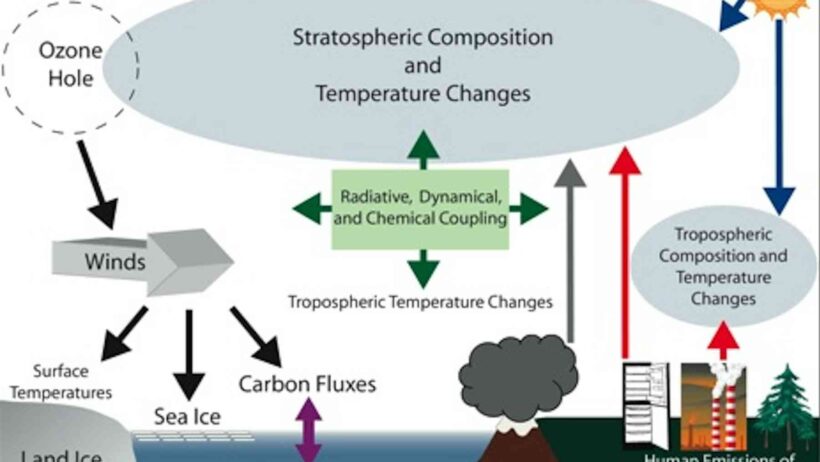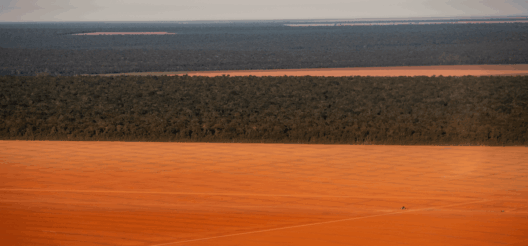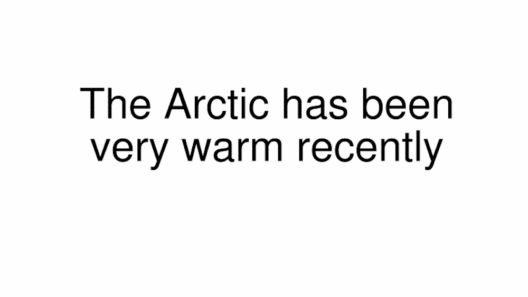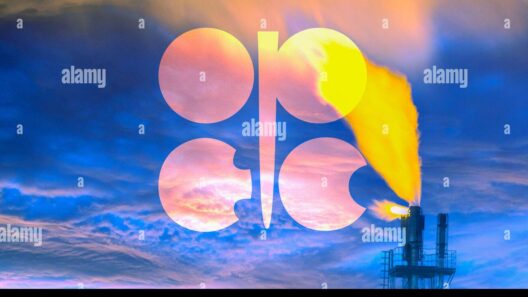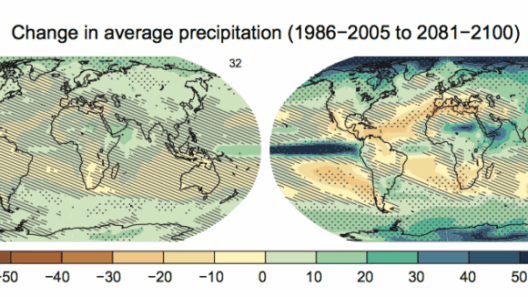Global warming and the depletion of the ozone layer are two critical facets of climate change that, while distinct, are interconnected in a complex web of environmental repercussions. To understand the nuanced relationship between these phenomena, it is essential to delve into the intricate dynamics of atmospheric layers and the forces that challenge their integrity.
At the uppermost reaches of the Earth’s atmosphere lies the ozone layer, a stratospheric shield composed primarily of ozone (O3) molecules. This layer absorbs the majority of the sun’s harmful ultraviolet (UV) radiation, acting as a protective filter for life on Earth. No metaphor captures its significance better than that of a giant sunblock—a translucent barrier that prevents the sun’s harsher rays from ravaging the delicate balance of ecosystems below. However, unlike conventional sunblock, which can easily be replenished, the ozone layer’s restoration is a convoluted process influenced by various anthropogenic and natural factors. The question arises: does global warming further exacerbate the fragility of this vital stratum?
To unravel this connection, one must first acknowledge the origins of global warming itself. The burning of fossil fuels, deforestation, and industrial practices release copious amounts of greenhouse gases, primarily carbon dioxide (CO2) and methane (CH4). These gases act like a heavy blanket, trapping heat in the Earth’s atmosphere, leading to an increase in global temperatures—a phenomenon recognized as global warming. This progressive rise in temperature engenders a cascade of effects within the stratosphere, prompting alterations that could potentially influence the ozone layer.
A critical examination reveals that in a warming climate, the dynamics of stratospheric circulation can change. As the atmosphere warms, it affects the stratosphere, resulting in altered wind patterns and pressure systems that can influence ozone distribution. In some instances, increased temperatures can lead to the creation of more stratospheric clouds, which provide a breeding ground for ozone-depleting reactions involving chlorofluorocarbons (CFCs) and other halogens. Herein lies a paradox—the very mechanisms designed to combat the depletion of the ozone layer could be undermined by the overarching forces of climate change.
Furthermore, while global warming may augment certain stratospheric phenomena, it is crucial to note that the relationship is not universally detrimental. For instance, the Montreal Protocol, an international accord established to curb the use of CFCs and other ozone-depleting substances, has led to a gradual recovery of the ozone layer. In essence, the collective response to the previous environmental crisis offers a sliver of hope amidst the clouds of uncertainty created by climate change. However, the resilience of the ozone layer is still precarious, as continuing global warming could temper or delay recovery progress.
The ongoing dialogue about climate change and the ozone layer is further complicated by the interaction between these two processes in the polar regions, particularly in Antarctica. The phenomenon of the Antarctic ozone hole serves as an illustrative case study. In a region beset by extreme cold, the conditions are ripe for the formation of polar stratospheric clouds. Here, chlorine released from CFCs catalyzes the breakdown of ozone, resulting in a pronounced depletion during the Southern Hemisphere’s late winter and spring seasons. As global temperatures rise, climate models predict increasingly volatile weather patterns that could influence the dynamics of these polar regions, potentially exacerbating ozone depletion.
In juxtaposition, the Arctic has exhibited different behaviors. With its more temperate climate compared to Antarctica, the Arctic ozone is subject to interannual variability less influenced by the extreme cold needed to sustain ozone-depleting reactions. Yet, the ramifications of global warming persist, leading to concerns about the potential for unusual weather phenomena and temperature fluctuations that might create conditions conducive to ozone loss.
Moreover, the role of climate change in marine ecosystems cannot be overlooked, as the interplay of ocean warming, acidification, and altered nutrient distribution has profound implications for the global carbon cycle. Marine phytoplankton—the ocean’s base of the food web and a significant carbon sink—plays a crucial role in generating oxygen and absorbing CO2. Disruption of these ecosystems due to global warming may inadvertently trigger a chain reaction that affects atmospheric composition, thereby influencing ozone restoration efforts.
In conclusion, while global warming and ozone depletion may be perceived as separate environmental issues, their intersection reveals an intricate tapestry of interdependencies. Global warming does not directly damage the ozone layer in a conventional sense but rather alters the atmospheric dynamics leading to potential challenges for its recovery. An ever-warming planet creates an unpredictable landscape fraught with uncertainties, necessitating vigilance and proactive measures. Continued commitment to international protocols, innovative scientific research, and sustainable practices is paramount in safeguarding both the ozone layer and the climate, ensuring that the protective blanket shielding life on Earth endures the tests of time.

